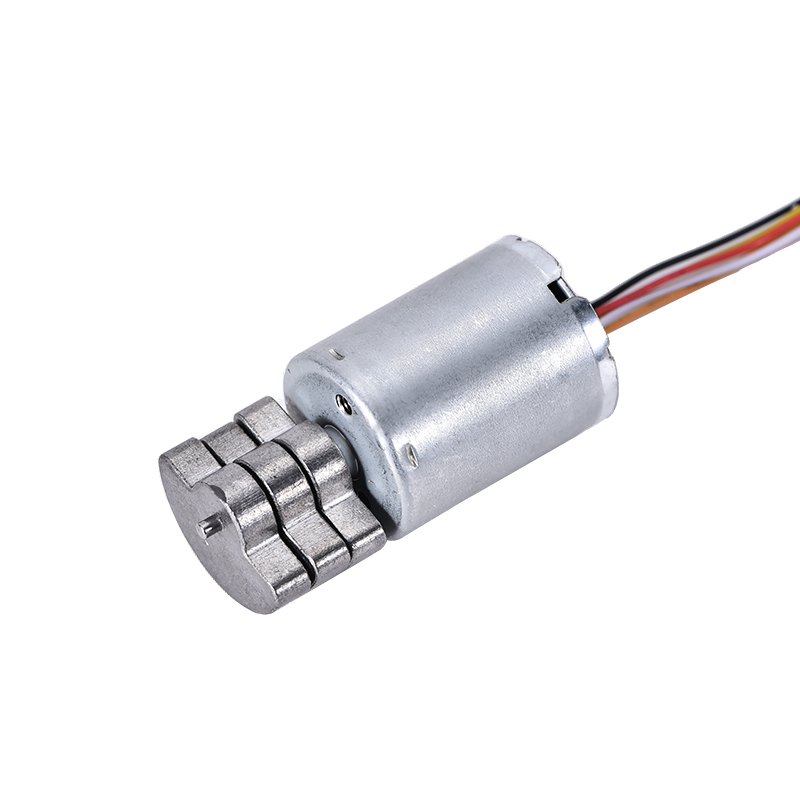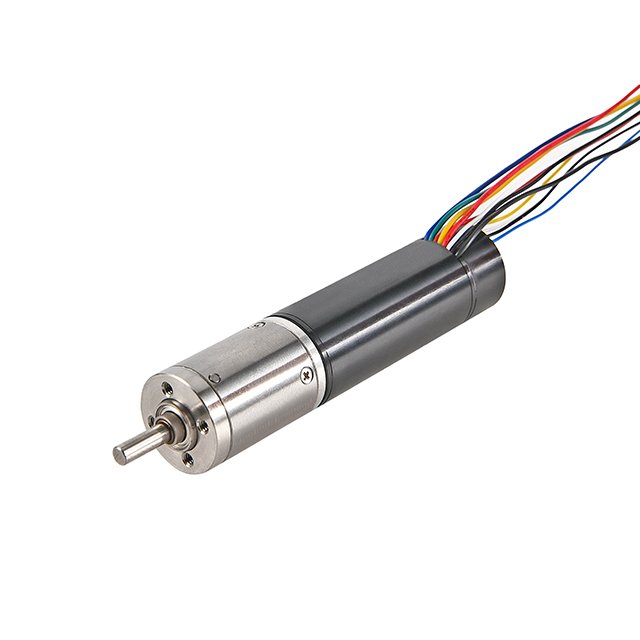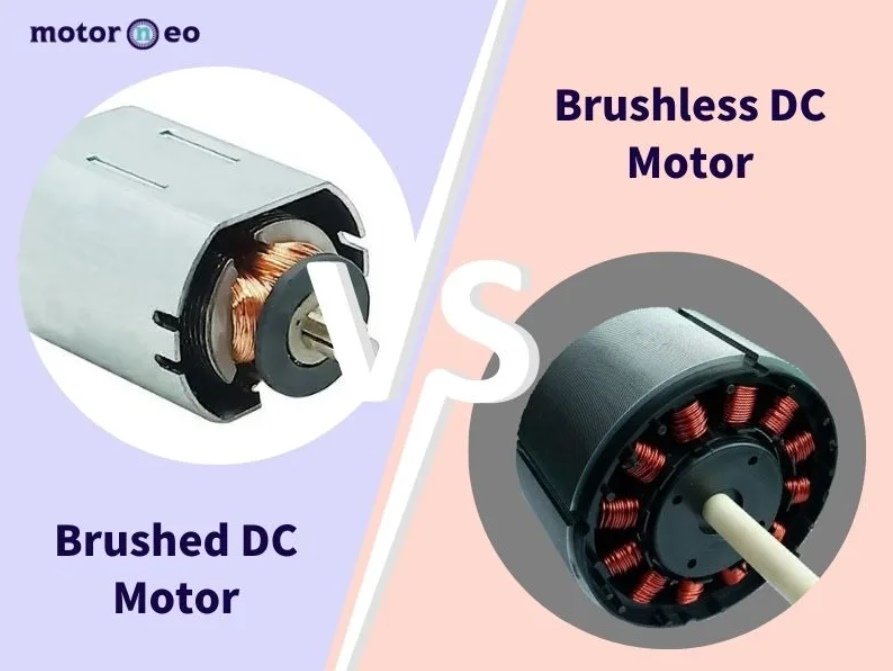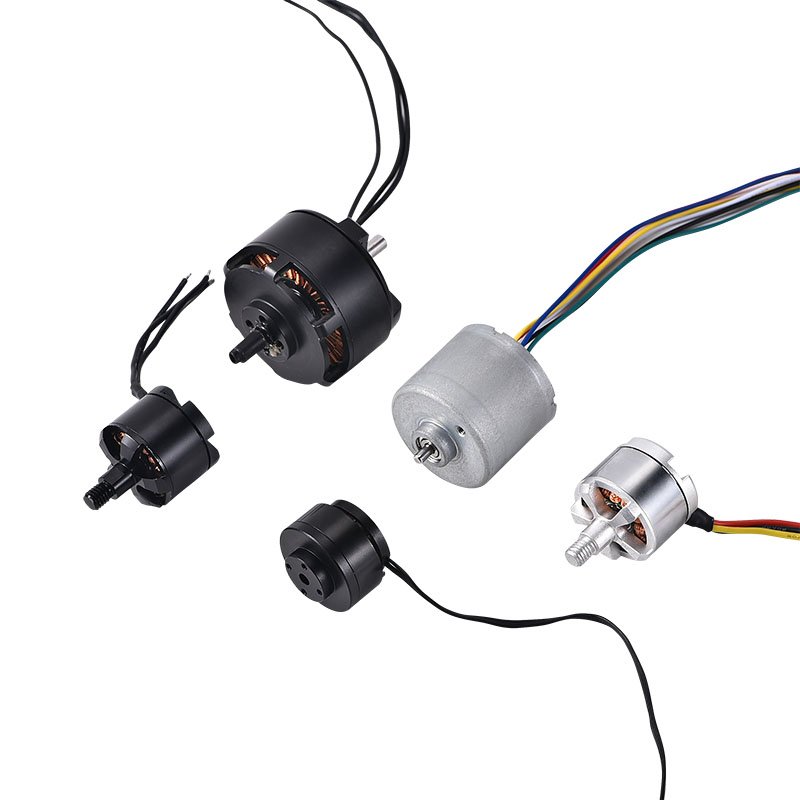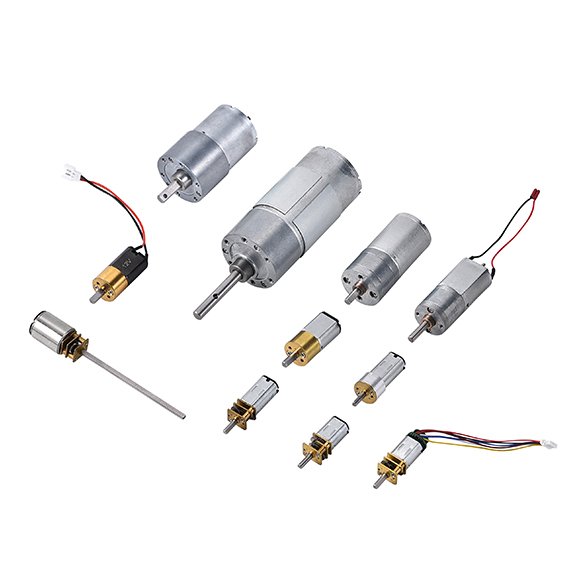You see major differences when comparing Brush vs Brushless Systems. Brushed motors use physical brushes, which cause friction and wear. Brushless motors rely on electronic commutation, so they run more efficiently and last longer. The global brushless DC motor market is growing rapidly because industries want higher performance and less maintenance. Brushed motors remain popular for their simplicity and cost-effectiveness. Understanding these design principles helps you select the best motor for your needs. INEED offers expert solutions in both brushed and brushless DC motors for many industries.
Key Takeaways
Brushed motors are cost-effective and simple, making them ideal for basic applications, but they require regular maintenance due to wear from brushes.
Brushless motors offer higher efficiency and longer lifespans, making them suitable for demanding environments like robotics and electric vehicles.
Choosing the right motor depends on your application’s needs, including factors like voltage, torque, and maintenance requirements.
Regular maintenance of brushed motors can extend their lifespan, while brushless motors reduce maintenance needs and costs over time.
Understanding the differences in efficiency and longevity between brushed and brushless systems can help you make informed decisions that save money and improve performance.
Brushed DC Motor Fundamentals
Design Principles
When you look at the design and operation of a brushed dc motor, you see how each component works together to deliver reliable performance. The design includes several key parts that make brushed motors effective for many applications. INEED Micro DC Motors use these principles to create high-quality solutions for industries like medical devices and robotics.
Component | Description | Function |
|---|---|---|
Commutator | Cylindrical arrangement of copper segments connected to the armature windings | Reverses current direction in windings, ensuring unidirectional torque for smooth operation. |
Brushes | Made of carbon or graphite, pressing against the commutator | Transfers electric current from the external circuit to the rotating commutator segments. |
Stator | Stationary part providing the magnetic field | Establishes a magnetic field that interacts with the armature current to create motion. |
Shaft | Mechanical component connected to the armature | Transmits rotational mechanical energy to the external load or device. |
Bearings | Support the rotating shaft | Reduce wear and tear, ensuring smooth and quiet operation. |
Motor Housing | Encloses and protects internal components | Offers mechanical support and environmental protection, often includes cooling features. |
Windings | Coiled wire conductors on the armature | Carry electrical current to create magnetic fields for motion. |
This design and operation allow brushed motors to deliver consistent torque and speed. You benefit from a straightforward structure that makes these motors easy to use and maintain.
Operation and Efficiency
Brushed dc motor operation relies on the interaction between the brushes, commutator, and windings. When you supply power, the brushes transfer current to the commutator, which reverses the current direction in the windings. This process creates a magnetic field that interacts with the stator, causing the shaft to rotate. You get immediate response and simple speed control, which is why brushed motors remain popular in many devices.
Typical efficiency ratings for brushed dc motors range from 75% to 85%. You may notice that friction and wear in the brushes and commutator can lower efficiency over time. Compared to other motor types, brushed motors operate with slightly less efficiency because of these losses. Heat from electrical resistance in the brushes and windings also affects performance. Despite this, brushed motors offer reliable operation for applications where simplicity and cost matter most.
Longevity and Maintenance
You need to consider longevity when choosing a brushed dc motor. Most brushed motors have a life expectancy of about 2,000 to 5,000 hours, depending on usage and maintenance. Regular maintenance is essential for extending the lifespan of your motor. You should inspect brushes and commutators for wear, lubricate bearings, check electrical connections, and monitor temperature during operation.
Tip: Setting a regular maintenance schedule helps you prevent unexpected breakdowns and keeps your brushed motors running smoothly.
INEED Micro DC Motors are designed for easy maintenance and long-lasting operation. You can rely on these motors for consistent performance in demanding environments. Their robust design and operation make them suitable for medical devices, industrial equipment, and robotics, where reliability and longevity are critical.
Brushless DC Motor Systems
Core Design and Technology
You see a major shift in motor technology when you choose brushless motors. The design of a brushless dc motor removes brushes and commutators, replacing them with electronic controllers. This change leads to better efficiency and less maintenance. You benefit from advanced control systems that allow precise speed and torque adjustments. INEED brushless dc motor and brushless gear motors use these modern designs to deliver excellent performance in many industries.
Feature | Brushed DC Motor | Brushless DC Motor |
|---|---|---|
Commutation Method | Uses brushes and commutators for current direction | Uses electronic controllers for current direction |
Maintenance | Requires frequent maintenance due to brush wear | Low maintenance due to absence of brushes |
Efficiency | Less efficient due to friction and wear | More efficient due to elimination of friction |
Lifespan | Shorter lifespan due to wear of brushes | Longer lifespan due to no brushes to wear out |
Noise | Generates noise due to mechanical contact | Quieter operation due to electronic commutation |
Applications | Suitable for automotive starters, household appliances | Ideal for electric vehicles, drones, HVAC systems |
Brushless motors have evolved since the late 1970s. You now see motors that use electronic commutation, which improves control and efficiency. Advancements in electronic control systems give you better responsiveness and speed regulation.
Efficiency and Performance
You get higher efficiency with brushless motors. Typical brushless dc motor systems reach efficiency ratings between 85% and 95%. This means you save energy and reduce heat. Brushless motors regulate speed to about +/-0.2% of the set speed, and with encoders, you can improve this to +/-0.05%. You also benefit from features like stored speed profiles and RS-485 communication. These features are not available in simple brushed dc motor controllers. Brushless motors eliminate friction from brushes, so you see less wear, less heat, and less vibration. This leads to better efficiency and excellent performance over time.
Brushless motors maintain efficiency even under heavy loads.
You experience quieter operation with less noise and vibration.
INEED brushless gear motors offer customization for torque, speed, and installation space, making them versatile for many applications.
Longevity and Reliability
Brushless motors stand out for their longevity and reliability. You can expect a well-manufactured brushless dc motor to last from 10,000 to 50,000 hours, depending on usage and maintenance. Brushless motors last up to three times longer than brushed motors. The absence of brushes means less wear and fewer breakdowns. You get consistent performance and reduced maintenance costs. INEED brushless motors provide reliable solutions for demanding environments, including industrial automation and pool cleaning equipment.
Tip: Choose brushless motors when you need long-lasting, low-maintenance, and high-performance solutions.
You can customize INEED brushless motors to fit your specific needs, ensuring optimal performance and reliability for your application.
Brush vs Brushless Systems Comparison
Efficiency Differences
When you compare brush vs brushless systems, efficiency stands out as one of the most important factors for the difference in performance. You see that brushed motors use physical brushes and commutators, which create friction and electrical losses. This friction leads to higher energy consumption and more heat generation. Brushless dc motors, on the other hand, use electronic controllers to eliminate these losses. This design allows you to achieve higher efficiency, especially in demanding applications.
Here is a table that shows the efficiency and operating life of both motor types:
Motor Type | Efficiency (%) | Operating Life (hours) |
|---|---|---|
Brushed Motors | 75 – 80 | 1,000 – 8,000 |
Brushless Motors | 85 – 90 | 10,000 – 100,000 |
You notice that brushless dc motors not only provide better efficiency but also last much longer. This difference becomes even more important in applications where energy savings and long-term reliability matter.
Brushed motors have lower efficiency because of friction and electrical losses from brushes and commutators. This results in higher energy consumption and more heat.
Brushless motors achieve higher efficiency by removing these losses. You get lower energy consumption and less heat generation.
This efficiency difference is crucial in battery-powered devices and industrial automation, where every bit of saved energy counts.
When you choose between brush vs brushless systems, you need to consider how efficiency affects your application’s performance and operating costs. INEED’s brushless gear motors, for example, deliver high efficiency and help you reduce energy use in pool cleaning equipment and other advanced systems.
Maintenance and Longevity
Maintenance and longevity are important factors for the difference between brushed and brushless dc motors. You see that brushed motors require frequent maintenance because the brushes wear down over time. You need to clean debris, replace brushes, and check for wear on the commutator. This regular upkeep increases the total cost and can lead to more downtime.
Brushless dc motors do not have brushes, so you spend less time and money on maintenance. The design reduces the number of moving parts that can fail. This leads to longer service intervals and fewer unexpected breakdowns.
Motor Type | Maintenance Requirements |
|---|---|
Brushed DC Motors | Require frequent maintenance due to brush wear, debris cleaning, and component interaction. |
Brushless DC Motors | Have lower maintenance needs as they do not have brushes that wear out, leading to less frequent servicing. |
You also find that failure rates differ. Brushed dc motors have higher failure rates because the brushes wear out. This means you may need to repair or replace them more often. Brushless dc motors have lower failure rates and longer mean time between failures (MTBF). The absence of brushes reduces friction and wear, which boosts reliability and extends the motor’s life.
When you look at cost over the product lifecycle, you see another clear difference:
Motor Type | Initial Cost | Long-term Cost | Maintenance Needs | Lifespan |
|---|---|---|---|---|
Brushed DC | Lower | Higher due to replacements | Higher due to wear | Shorter lifespan |
Brushless DC | Higher | Lower due to efficiency | Lower due to design | Longer lifespan |
You might pay more upfront for a brushless dc motor, but you save money over time because you avoid frequent repairs and replacements. This makes brushless systems a smart choice for applications where maintenance and longevity are critical.
Application Suitability
You need to match the right motor to your application. Brush vs brushless systems each have strengths that make them better suited for different uses. Brushed dc motors work well in simple, cost-sensitive applications. You often find them in power tools and devices where precision and noise are less important. Their simple design and low initial cost make them attractive for these uses.
Brushless dc motors excel in demanding environments. You see them in aerospace, automotive, robotics, and consumer electronics. These applications require high efficiency, long lifespan, and low maintenance. Brushless motors also operate quietly, which is important in many modern devices.
Motor Type | Key Advantages | |
|---|---|---|
Brushless DC | Aerospace, Automotive, Robotics, Consumer Electronics | Longer lifespan, higher efficiency, lower maintenance, quieter operation |
Brushed DC | Power tools, simpler applications | Cost-effective, easy to manufacture, but less durable due to wear and tear |
You can see real-world examples of how the choice between brush vs brushless systems impacts performance. In medical mobility equipment, brushed dc motors offer a low-cost solution for moderate-speed tasks. However, in critical medical applications, brushless dc motors provide higher efficiency, longer lifespan, and better heat dissipation, which are essential for patient safety and device reliability.
INEED’s brushless gear motor for pool cleaners shows how brushless systems solve real challenges. The pool cleaning industry needs motors that can handle debris, climb stairs, and work in wet environments. INEED developed a brushless planetary gear motor with high torque and long life. This motor helps pool cleaners perform better, last longer, and require less maintenance. You benefit from lower operating costs and improved reliability.
You also need to consider environmental conditions. Brushless motors perform well in harsh settings with dust, moisture, or vibration. Brushed motors are better for clean, stable environments where maintenance is easy.
Tip: Always consider your application’s needs for efficiency, maintenance and longevity, and cost. The right choice between brush vs brushless systems can improve performance, reduce downtime, and save money over the life of your equipment.
By understanding these important factors for the difference between brushed and brushless dc motors, you can make informed decisions that match your application’s requirements and budget.
Choosing the Right Motor with INEED
Assessing Needs
You need to start by understanding why your application demands a specific dc motor. The right choice depends on several factors that affect performance and reliability. When you assess your needs, you look at the power source, speed settings, and expected operating lifetime. You also consider the voltage available, the size of the motor, and the torque and speed required for your device.
Factor | Description |
|---|---|
Voltage | The available voltage range for dc motors is crucial, typically between 6V to 42V. |
Motor Size | The motor must fit within the device’s size constraints while maintaining efficiency. |
Torque and Speed | Torque is inversely proportional to speed; larger motors provide higher torque for demanding applications. |
Duty Cycle | Determines how long the motor can run before needing rest; critical for service life. |
Working Conditions | Environmental factors like temperature and dust can impact motor performance and lifespan. |
You should also think about power requirements, environmental conditions, and control options. For example, if your application needs lower energy consumption or higher reliability, you may want to consider the demand of brushless motor technology. Applications with high duty cycles, such as hybrid vehicles or industrial automation, benefit from brushless dc motors because they offer extended life-time and reduced maintenance.
Decision Factors
You need to know why certain decision criteria matter when selecting between brushed and brushless dc motor systems. The following list helps you focus on what is most important:
Determine voltage requirements for your dc motor.
Decide speed requirements based on your application.
Figure out torque requirements for the load.
Consider size versus performance constraints.
Establish your duty cycle and operating time.
Brushed dc motors work well for constant-speed operation and moderate to low-speed tasks. They suit environments where cost is a major factor and maintenance is easy. Brushless dc motors excel in applications that require higher reliability, extended life-time, and lower energy consumption. You see the demand of brushless motor increasing in fields like robotics, medical devices, and hybrid vehicles.
INEED gives you access to a wide range of dc motor solutions. You can customize motors for torque, speed, voltage, and mounting options. INEED’s technical support team helps you match the right motor to your needs. You benefit from cost savings, torque multiplication, speed reduction, and better inertia matching. These advantages improve system efficiency and reliability.
Tip: Upload your design files to INEED for a quick quote and expert guidance. You get personalized support to ensure your dc motor fits your application perfectly.
You make a smart choice when you select a dc motor from INEED. You get extended life-time, higher reliability, and lower energy consumption for your equipment.
You need to understand why choosing the right motor matters. The table below highlights the main differences:
Motor Type | Efficiency (%) | Lifespan (hours) | Maintenance Requirements |
|---|---|---|---|
Brushed | 75 – 80 | 2,000 – 5,000 | Higher |
Brushless | 85 – 90 | 10,000+ | Lower |
Brushless motors give you higher efficiency and longer life with less upkeep. Brushed motors work well for simple needs but require more care. INEED helps you find the best fit for your project. You can rely on their technical team for expert advice and custom solutions.
FAQ
Why should you choose a brushless motor for electric vehicles?
You should choose a brushless motor for electric vehicles because it offers higher efficiency, longer lifespan, and lower maintenance. This technology helps you achieve better performance and reliability, which are essential for modern transportation.
Why do brushed motors require more maintenance?
Brushed motors need more maintenance because the brushes and commutator wear down during operation. You must replace these parts regularly to keep the motor running smoothly and prevent unexpected failures.
Why does efficiency matter when selecting a motor system?
Efficiency matters because it affects energy consumption and operating costs. You save money and reduce heat generation when you use a more efficient motor. High efficiency also improves the performance of your equipment.
Why is longevity important in motor selection?
Longevity is important because it determines how long your motor will operate before needing replacement. You reduce downtime and save on repair costs when you choose a motor with a longer lifespan.
Why do brushless motors operate more quietly than brushed motors?
Brushless motors operate more quietly because they use electronic commutation instead of physical brushes. You experience less noise and vibration, which is ideal for sensitive environments and advanced applications.
